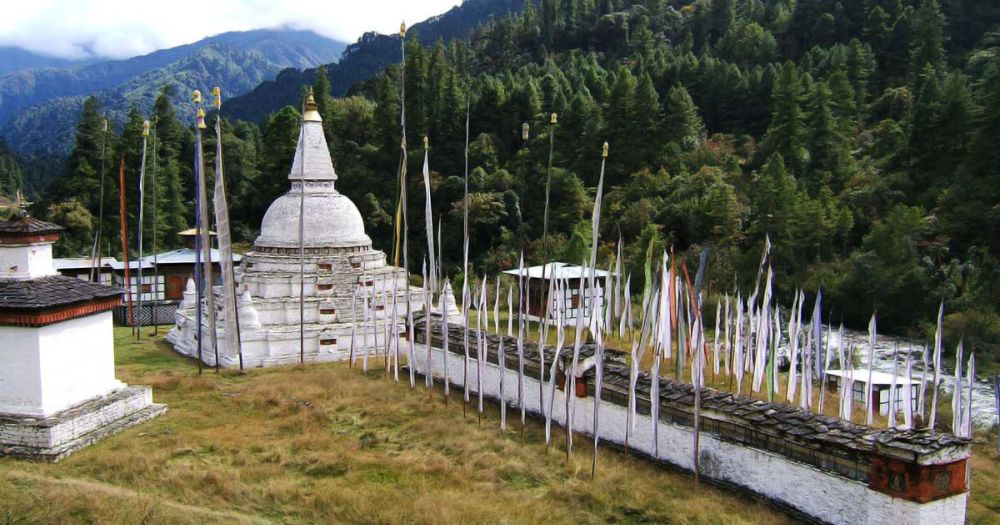

Nestled in the heart of the serene and historical Trongsa district of Bhutan, the Chendebji Chorten has been a symbol of peace and spirituality for both locals and tourists alike. The stupa is situated about 10 km from the town of Trongsa, providing visitors with a sublime combination of Bhutanese culture and tranquility set against a backdrop of picturesque landscapes.
The history of Chendebji Chorten dates back to the 18th century. It was built by a Tibetan lama named Lama Zhida, under the orders of Zhidar Rinpoche, to subdue a demon that had been causing trouble in the Chendebji area. The stupa's design is said to be modeled after the Swayambhunath Stupa in Kathmandu, Nepal. An important relic for Bhutanese people, it has long been a destination for pilgrims and devout Buddhists, who perform circumambulations around the stupa to gain merit.
While Bhutan opened its doors to tourism in 1974 with a cautious and sustainable approach, Chendebji Chorten has grown to be a significant point of interest. Initially, tourism in Bhutan was very exclusive, allowing only a limited number of visitors to maintain cultural integrity and avoid environmental degradation. Over the years, as interest in Bhutan's unique culture and traditions grew, more tourists began to include Chendebji Chorten as part of their itineraries, particularly those interested in Buddhism, history, and nature.
In recent years, Bhutan has seen a shift towards high-value, low-impact tourism, which promotes sustainable travel practices and ensures travelers get the most enriching experience possible while preserving the country’s environment and culture.
The latest trends include:
For those planning a visit to Chendebji Chorten, the best time is during the spring or autumn seasons when the weather is pleasant and the views are at their most spectacular. It is advised for visitors to respect the sacred nature of the site and dress modestly. Furthermore, as Bhutan maintains a strict tourist policy, all foreign travelers must arrange their trips through a registered Bhutanese tour operator, which includes a mandatory daily tariff that covers accommodation, food, transportation, and a guide.
As a testimony to Bhutan's rich spiritual heritage and commitment to preserving its historical and natural wonders, Chendebji Chorten remains a must-visit destination for those looking to experience the peace and beauty that is so characteristic of this Himalayan kingdom.